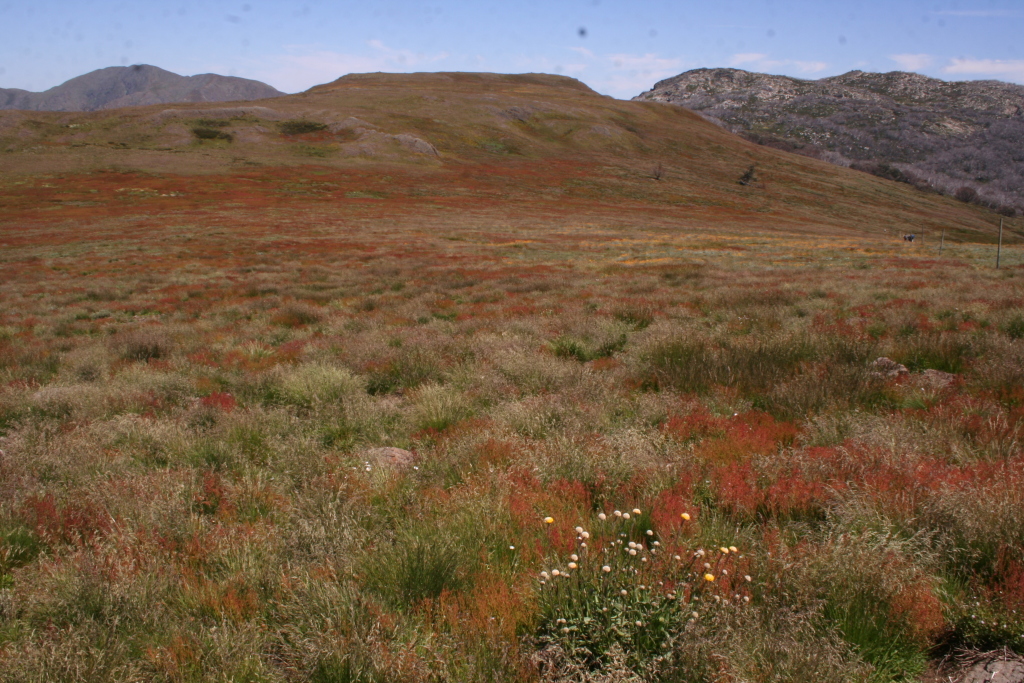Acetosella vulgaris
Fourr. Sheep SorrelSlender rhizomatous herb, often reddish tinged, to c. 50 cm high, with erect, usually few-branched stems. Leaves mostly basal, lamina narrowly ovate to obovate, 2–6 cm long, 5–15 mm wide, hastate at base with lobes narrow and usually widely diverging to c. 2 cm long, or the upper stem leaves sometimes entire and linear. Inflorescence a narrow panicle with more or less erect branches, rarely unbranched and spike-like; perianth green to deep reddish-purple; flowers shortly pedicellate; males with segments oblong to elliptic, 1.5–2.5 mm long, the inner 3 broader than outer; female flowers initially c. 0.5–1 mm long, the inner 3 segments rapidly enlarging to c. 1.5 mm long at maturity. Nut ovate, acute, 1–1.5 mm long, smooth and shining but remaining enclosed within the adherent inner perianth segments. Flowers Sep.–Nov.
LoM, MuM, Wim, GleP, Brid, VVP, VRiv, MuF, GipP, OtP, WaP, Gold, CVU, GGr, DunT, NIS, EGL, EGU, WPro, HSF, HNF, OtR, Strz, MonT, HFE, VAlp. Also naturalised WA, Qld, NSW, Tas. Native to Europe. Widespread throughout the state except the northern plains and north-west. Common on agricultural land, roadsides, other disturbed sites, and in open situations in native grassland and open shrublands, particularly following grazing by sheep or cattle.
Walsh, N.G. (1996). Polygonaceae. In: Walsh, N.G.; Entwisle, T.J., Flora of Victoria Vol. 3, Dicotyledons Winteraceae to Myrtaceae, pp. 272–295. Inkata Press, Melbourne.
 Spinning
Spinning
